North American Numbering Plan

The North American Numbering Plan (NANP) is an integrated telephone numbering plan that encompasses 25 countries and territories primarily in North America, the Caribbean, and U.S. territories. However, not all North American countries participate in the NANP.
The NANP is a system of numbering plan areas (NPA) using telephone numbers consisting of a three-digit area code, a three-digit central office code, and a four-digit station number. Through this plan, telephone calls can be directed to particular regions of the larger NANP public switched telephone network (PSTN), where they are further routed by the local networks. The NANP is administered by the North American Numbering Plan Administration (NANPA), a service operated by Neustar Inc. The international calling code for the NANP is 1.
History
From its beginnings and throughout the first part of the 20th century, the Bell System grew from essentially local or regional telephone systems. These systems expanded by growing their subscriber bases, as well as increasing their service areas by implementing additional local exchanges that were interconnected with tie trunks. It was the responsibility of each local administration to design telephone numbering plans that accommodated the local requirements and growth.[1] As a result the Bell System as a whole developed into an unorganized system of many differing local numbering plans that impeded the efficient operation and interconnection of the nation-wide system for long-distance telephone calls. By the 1940s, the Bell System set out to unify the various numbering plans in existence and developed the North American Numbering Plan as a unified, systematic approach to efficient long-distance service that eventually did not require the involvement of switchboard operators.
The new numbering plan divided the North American continent into regional service areas, called National Plan Areas, primarily based on the states and provinces. Each National Plan Area (NPA) was identified by a three-digit code number. The National Plan Areas were created in accordance with principles that were deemed to maximize customer understanding and minimizing the dialing effort, while reducing plant cost.[2] The plan was designed so that any telephone within the service territory of the plan was identified by a unique 10-digit destination routing address. The leading part of this address was the area code (three digits), followed by a seven-digit subscriber number consisting of three digits for the exchange or central office and four digits for the station or line number. Typical switching systems were designed to serve up to 10,000 telephones, hence requiring four digits. The central-office code was chosen such that it could be represented by the first two letters of the central office name according to a digit-to-letter mapping that was printed on the face of a rotary dial, by grouping a set of letters with the digits 2 through 9. Such letter translations, designed by W.G. Blauvelt in 1917, had been used in the Bell System in large metropolitan areas since the late 1910s.[3] The network reorganization eventually resulted in a 2-letter 5-digit (2L-5N) representation of telephone numbers for every exchange in North America.
The new network design, completed in 1947, provided for 152 area codes, each with a capacity to serve 540 central offices.[2] The allocation of area codes was readjusted as early as 1948, to account for inadequacies in some metropolitan areas. For example, Indiana area code 317 was split to provide a larger number pool in the Indiana suburbs of Chicago (area code 219).
New Jersey received the first area code in the new system, area code 201.[4]
Area codes were first used by long-distance operators to establish long-distance calls between toll offices. The first customer-dialed direct call using area codes was made on November 10, 1951, from Englewood, New Jersey, to Alameda, California.[5] Direct distance dialing (DDD) was subsequently introduced across the country and by the early 1960s most areas of the Bell System had been converted and it was commonplace in cities and most larger towns.
In the following decades, under an independent administration provided by Lockheed Martin IMS and later Neustar, the system grew to include the United States and its territories, Canada, Bermuda, and 17 nations of the Caribbean.[6][7] At the request of the British Colonial Office, the numbering plan was first expanded to Bermuda and the British West Indies, including Trinidad and Tobago, because of their historic telecommunications administration through Canada as parts of the British Empire, and their continued associations with Canada, especially during the years of the telegraph and the All Red Line system.
Not all North American countries participate in NANP, including Mexico, the Central American countries and some Caribbean countries (Cuba, Haiti, and the French Caribbean) are not part of the system. The only Spanish-speaking sovereign nation in this plan is the Dominican Republic. Mexican participation was planned, but implementation stopped after two area codes were put into use (Mexico City and northwestern Mexico); these ended in 1991 when Mexico withdrew from the NANP. Dutch-speaking Sint Maarten joined the NANP in September 2011.[8]
Saint Pierre and Miquelon (+508) and Greenland (+299), both North American possessions of European Union nations, use non-NANP codes which are independent of their respective home countries (+33 France and +45 Denmark).
Until 1991, calls to some areas of Mexico from the United States and Canada were made using NANP area codes, but Mexico discontinued participation in the NANP in favor of an international format, using country code +52. Area code 905 (formerly Mexico City) was reassigned to a split of area code 416 (the Greater Toronto Area); area code 706 (formerly northwest Mexico) was reassigned to northern Georgia , surrounding the Atlanta region which retained 404; and area code 903, which also served a small portion of northern Mexico, was reclaimed and later reassigned to northeastern Texas when it split from area code 214.
Numbering system
Originally only 86 area codes of the 152 possible codes were assigned. The most populous areas received the numbers that took the shortest time to dial on rotary telephones.[9] Thus, five largest cities based on 1950 US Census population received some of the shortest codes: New York City was given 212, Chicago 312, Los Angeles 213, Detroit 313, Philadelphia 215; while four areas received the then-maximum number of 21 clicks: South Dakota (605), North Carolina (704), South Carolina (803), and the Maritime Provinces of Canada (902). In the original plan a middle digit of 0 indicated that the area code covered an entire state or province, while area codes with a middle digit of 1 were assigned to jurisdictions that were divided into multiple area codes.[10]
At first, area codes were all in the form NYX, where N is any number 2–9, Y is 0 or 1, and X is any number 1–9 (if Y is 0) or any number 2–9 (if Y is 1). The restriction on N saves 0 for calling the operator, and 1 for signaling a long-distance call. The restriction on the second digit, limiting it to 0 or 1, was designed to help telephone equipment recognize the difference between a three-digit "area code" (with 0 or 1 as the second digit) and the three-digit "exchange" prefix (which had avoided 0 or 1 for the second digit, because of restrictions in existing switching equipment). For example, when a caller dialed "202-555-1212", the switching equipment would recognize that "202" was an area code because of the middle 0, and route the call appropriately. If a caller were to dial 345-6789, the 4 would cause the number to be recognized as a number within its own area code and routed as such, without waiting for the caller to dial any more digits.
In the late 1980s and early 1990s, the NANPA started to implement calling procedures, that required all long-distance calls within an area code to be prefixed with 1 in an effort to make it possible to assign central office prefixes with 0 or 1 in the middle position. As it had nearly run out of area codes using the existing assignment methods, it allowed the assignment of area codes of the form N10, such as 210 in the San Antonio, Texas, area and 410 in eastern Maryland. Therefore, someone calling from San Jose to Los Angeles before the change would have dialed 213-555-1234 and after the change 1-213-555-1234, which permitted the use of 213 as an exchange prefix in the San Jose area.
The NANP number format may be summarized in the notation NPA-NXX-xxxx:
| Component | Name | Number ranges | Notes |
|---|---|---|---|
| NPA | Numbering Plan Area Code | Allowed ranges: [2–9] for the first digit, and [0-9] for the second and third digits. When the second and third digits of an area code are the same, that code is called an easily recognizable code (ERC). ERCs designate special services; e.g., 888 for toll-free service. The NANP is not assigning area codes with 9 as the second digit.[11] | Covers Canada, the United States, parts of the Caribbean Sea, and some Atlantic and Pacific islands. The area code is often enclosed in parentheses. |
| NXX | Central Office (exchange) code | Allowed ranges: [2–9] for the first digit, and [0–9] for both the second and third digits (however, in geographic area codes the third digit of the exchange cannot be "1" if the second digit is also "1"). | Often considered part of a subscriber number. The three-digit Central Office codes are assigned to a specific CO serving its customers, but may be physically dispersed by redirection, or forwarding to mobile operators and other services. |
| xxxx | Subscriber Number | [0–9] for each of the four digits. | This unique four-digit number is the subscriber number or station code. |
For example:
- 234-235-5678 is valid
- 234-911-5678 is invalid, because the exchange code cannot be in the form N11. (For non-geographic area codes like +1-800, 9-1-1 remains invalid, but other N-1-1 codes are valid exchange prefixes)
- 123-234-5678 is invalid, because NPA cannot begin with 0 or 1
- 281-234-5678 is valid.
The country calling code for the NANP is +1. In international format, an NANP number should be listed thus: +13015550100 (example using the original area code for Maryland). The trunk prefix code for direct-dialed long-distance in the NANP is also 1.
Each three-digit area code may contain up to 7,919,900 unique phone numbers:
- NXX may begin only with the digits [2–9], providing a base of 8 million numbers: ( 8 x 100 x 10000 ) .
- However, the last two digits of NXX cannot both be 1, to avoid confusion with the N11 codes (subtract 80,000).
- Despite the widespread usage of NXX "555" for fictional telephone numbers — see 555 (telephone number) — today, the only such numbers specifically reserved for fictional use are "555-0100" through "555-0199", with the remaining "555" numbers released for actual assignment as information numbers (subtract 100).
- In individual geographic area codes, several other NXX prefixes are generally not assigned: the home area code(s), adjacent domestic area codes and overlays, area codes reserved for future relief nearby, industry testing codes (generally NXX 958 and 959) and special service codes (such as NXX 950 and 976).
Number portability
47 U.S.C. § 251(b)(2), added by the Telecommunications Act of 1996, requires all local exchange carriers (LECs) to offer number portability in accordance with the regulations of the Federal Communications Commission (FCC).[12] The FCC implemented regulations on 27 June 1996, with LECs required to implement them in the 100 largest Metropolitan Statistical Areas by 1 October 1997 and elsewhere by 31 December 1998.[13] (The regulations are currently located at 47 C.F.R. 52 Subpart C, 47 C.F.R. 52.20 et seq.) Toll-free telephone numbers (area code +1-800) have been portable through the RespOrg system since 1993.[14] The North American Numbering Council (NANC) was directed to select the Local Number Portability Administrators (LNPAs, also referred to as the Number Portability Administrator[15]), akin to the North American Numbering Plan Administrator (NANPA).[16]
The number portability database is a "linchpin for federal agencies setting up wiretaps or conducting surveillance".[17] Neustar, as LNPA, "essentially [acts] as the air traffic controller for the nation's phone system".[18]
Expansion
Canada and the United States have experienced rapid growth in the number of area codes, particularly between 1990 and 2005. There are two main reasons for this. First, there is the increasing demand for telephone services (particularly resulting from widescale adoption of fax, modem, and mobile phone communications).
The second and more important reason is the telecom regulation of local telephone service in the United States beginning in the early to mid-1990s. At that time, the Federal Communications Commission began allowing telecommunication companies to compete with the incumbent local exchange carrier (usually by forcing the existing monopoly service provider to lease infrastructure to other local providers who then resold the service to consumers). However, because of the original design of the numbering plan and telephone switching network that assumed only a single provider, number allocations had to be made in 10,000-number blocks.
Thus, whenever a new local service provider entered a given market, it would be allocated 10,000 numbers by default, even if the provider only obtained a few customers. As more companies requested numbering allocations, many area codes were faced with the problem of exhausting their number supply; in telecom jargon, such an area is "in jeopardy". Many of the new telecom ventures were not successful. While the number of area codes increased rapidly, this did not always translate to a much larger number of telephone subscribers as large blocks of numbers remained unassigned because of the 10,000-number block allocation methodology. When these telecom ventures were merged or terminated, their blocks transferred to the successors or remained unused. No regulatory mechanism existed to reclaim and reassign these underutilized blocks.
In general, area codes are added by two methods, splits and overlays. Splits were implemented by dividing a plan area into two or more regions, one of which retained the existing area code and the other areas receiving a new code. In an overlay, multiple codes are assigned to the same geographical area, obviating the need for any renumbering of existing services. Subtle variations of these techniques have been used as well, such as dedicated overlays, in which the new code is reserved for a particular type of service, such as cellular phones and pagers, and concentrated overlays, in which a part of the area retained a single code while the rest of the region received an overlay code. The only service-specific overlay in the NANP was area code 917 (New York City) when it was first installed; such service-specific area code assignments were later prohibited by the Federal Communications Commission.
Most area codes of the form N10, originally reserved for AT&T's Teletypewriter eXchange service, were transferred to Western Union in 1969 and were freed up for other use in 1981 after conversion to Telex II service was complete. The last of these, +1-610-, was assigned to Canada and liberated in 1992. These "new" area codes (along with codes formerly used as aliases to Mexican numbers) were used for telephone area code splits in the late 1980s and early 1990s, as all other area codes under the original plan had been consumed.
After the remaining valid area codes were used up by expansion, in 1995 the rapid increase in the need for more area codes (both splits and overlays) forced NANPA to allow the digits 2 through 8 to be used as a middle digit in new area code assignments, with 9 being reserved as a "last resort" for potential future expansion. At the same time, local exchanges were allowed to use 1 or 0 as a middle digit. The first area codes without a 1 or 0 as the middle digit were area code 334 in Alabama and area code 360 in Washington, which both began service on January 15, 1995. This was quickly followed by area code 520 serving Arizona on March 19, 1995.
Codes ending in double digits are reserved as easily recognizable codes (ERCs), to be used for special purposes such as toll-free 800, 888, 877, 866, 855 and 844, personal 500 numbers, Canadian non-geographic area code 600, carrier-specific 700 numbers, and high-toll 900 numbers, rather than for geographic areas. Nevada was denied 777 for this reason; it received 775 instead when most of Nevada split from 702, which continues to serve the Las Vegas metropolitan area.
Splits and overlays
By 1995, many cities in the United States and Canada had more than one area code, either through splitting the city into different areas (splits) or having more than one code for the same area (overlays). For example, in Manhattan, subscribers' numbers had the NPA code 212, but two additional codes—first 917 (which initially was exclusively for cellular phones and pagers until that idea was struck down in a Federal court), then 646—were also introduced. This means that the area code must be dialed, even for local calls. In other areas, 10-digit or 11-digit dialing is now required for all local calls. The transition to 10-digit dialing typically starts with a permissive dialing phase in which both 7-digit and 10-digit dialing is optional. During this period, the transition is heavily publicized. After a period of several months, the mandatory dialing phase is introduced, in which 7-digit dialing no longer works. Atlanta was the first US city to have mandatory 10-digit dialing throughout its metropolitan area, roughly coinciding with the 1996 Summer Olympics held there. Atlanta was used as the test case not only because of its size, but also because it enjoyed the world's largest fiber optic network at the time (five times that of New York then), and it was home to BellSouth (now part of AT&T), then the Southeastern Regional Bell Operating Company.
- 7-digit dialing: NXX xxxx (NPA code not required)
- 10-digit dialing: NPA NXX xxxx
- 11-digit dialing: 1 NPA NXX xxxx (1 is the NANP trunk prefix for long distance circuits).
The overlap between area codes and exchange prefixes has occasionally produced confusion because the three digits may be the same for both. Nashua, New Hampshire, for example, has a local exchange code, (603) 888. However, 888 is also an area code for toll-free service. If somebody in Nashua means to call 1-888-555-1212, but forgets the trunk prefix 1, the user might actually dial the local number 603-888-5551. This, however, is generally not a problem in major metropolitan areas with overlapping area codes, which were mandated by the FCC to dial all ten digits for all local calls so as not to give new numbers or telecommunications providers a disadvantage.
Expansion issues
Depending on the techniques used for area code expansion, the effect on telephone users varies. In areas in which overlays were used, this generally avoids the need for converting telephone numbers, so existing directories, business records, letterheads, business cards, advertising, and "speed-dialing" settings can retain the same phone numbers, while the overlay is used for new number allocations. The primary impact on telephone users is the necessity of remembering and dialing 10- or 11-digit numbers when only 7-digit dialing was previously permissible.
The use of a splitting instead of an overlay generally avoids the requirement for mandatory area-code dialing, but at the expense of having to convert some of the numbers to the new code. In addition to the requirements of updating records and directories to accommodate the new numbers, for efficient conversion this requires a period of "permissive dialing" in which the new and old codes are both allowed to work. Also, many splittings involved significant technical issues, especially when the area splittings occurred over boundaries other than phone network divisions.
As an extreme example of an area code splitting gone somewhat awry, in 1998 area code 612, which had covered the Minneapolis – Saint Paul Twin Cities, was split to create area code 651 for St. Paul and the eastern metropolitan area. The Minnesota Public Utilities Commission mandated that the new boundary exactly follow municipal boundaries (which were distinctly different from telephone exchange boundaries), and that all subscribers keep their 7-digit numbers. These two goals were directly at odds with the reason for the split (to generate additional phone numbers), and there were more than 40 exchanges whose territory straddled the new boundary. The result was prefixes duplicated in both area codes, which counteracted much of the benefit of the splitting, with only 200 of 700 prefixes in area 612 moving entirely to area 651. As a result, in less than two years area code 612 again exhausted its supply of phone numbers, and it underwent another three-way split in 2000, creating the new area codes 763 and 952. Again, the split followed political boundaries rather than rate center boundaries, resulting in additional split prefixes; a few numbers moved from 612 to 651 and then to 763 in less than two years.
Decrease in expansion rate
Recognizing that the proliferation of area codes was largely due to the telecom regulation act and the assignment of numbers in blocks of 10,000, the FCC instructed NANPA, by then administered by Neustar, to alleviate the numbering shortage. As a result, number pooling was piloted in 2001 as a system for allocating local numbers to carriers in blocks of 1,000 rather than 10,000. Because of the then design of the switched telephone network, this was a considerable technical obstacle. Number pooling was implemented with another technical obstacle, local number portability.
The program has been implemented in much of the United States by state regulators. A limited number of cities have also implemented rate centre consolidation; fewer rate centres resulted in more efficient use of numbers, as carriers would reserve blocks of 1000 or 10000 numbers in each of multiple rate centres in the same area even if they had relatively few clients in the area.[19] Together with aggressive reclamation of unused number blocks from telecom providers, number pooling has reduced the need for additional area codes, so that many previously designated area splits and overlays have been postponed indefinitely.
There is no number pooling in Canada. Number allocation remains highly inefficient as even the tiniest village is a rate centre and every CLEC is assigned blocks of ten thousand numbers in every place it offers new local service. As a result, dialing seven digits even in remote locations like James Bay is more likely to produce a "dial the area code" intercept message than an actual voice connection.
New area codes outside the United States proper and Canada
Before 1995, all NANP countries and territories outside the fifty United States, the District of Columbia, and Canada shared the area code 809. This included Puerto Rico and the U.S. Virgin Islands. Each has since been assigned one or more distinct national plan areas; code (809) is only used by the Dominican Republic. In 1997 the United States Pacific Territories of the Northern Mariana Islands and Guam became part of the NANP, as did American Samoa in October 2004. The Dutch possession of Sint Maarten was originally scheduled to join the NANP on May 31, 2010, but the changeover was postponed to September 30, 2011.[8]
- Bermuda
- Until 1995: +1 809 29x xxxx
- After 1995: +1 441 xxx xxxx
- Puerto Rico
- Until 1996: +1 809 xxx xxxx
- 1996-2001: +1 787 xxx xxxx
- After 2001: +1 787 xxx xxxx or +1 939 xxx xxxx (overlay for entire island)
- US Virgin Islands
- Until 1997: +1 809 xxx xxxx
- After 1997: +1 340 xxx xxxx
- Northern Marianas
- Until 1997: +670 xxx xxxx
- After 1997: +1 670 xxx xxxx
- Guam
- Until 1997: +671 xxx xxxx
- After 1997: +1 671 xxx xxxx
- American Samoa
- Until October 1, 2004: +684 xxx xxxx
- After October 2, 2004: +1 684 xxx xxxx
- Sint Maarten
- Until September 30, 2011: +599 5xx xxxx
- From September 30, 2011: +1 721 xxx xxxx
Number size expansion
Likely sometime after 2044, the NANP system may face the task of adding one or two digits to each number.[20] During that time, all public and private phone systems within the NANP area will have to be upgraded and reprogrammed (or even replaced) to recognize the new dialing rules.
One plan being considered adds a 1 or 0 either to the beginning or end of the area code or the beginning of the 7-digit subscriber number, which will require mandatory 11-digit dialing even for local calls, between any two NANP numbers, well before the transition period. In another proposal, existing codes would be changed to "x9xx" (e.g. San Francisco's 415 would become 4915); once that conversion is complete, the new second digit would be opened for a new range. (Compare PhONE Day in the United Kingdom, which added a "1" to the beginning of area codes in preparation for later using other digits, such as "2", for new area codes.) Other proposals include reallocating blocks of numbers assigned to smaller long distance carriers or unused reserved services.
NANPA previously coordinated an expansion of long-distance carrier access ("dial-around") codes from five digits (such as 10-321) to seven (10-10-321), in 1998. Vertical service codes, such as *69 (callback) and *70 (suspend call waiting), have been designed to allow the use of both two- and three-digit codes.
NANP countries and territories
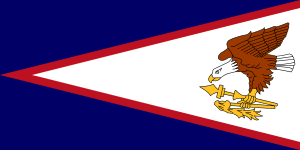 American Samoa - +1 684
American Samoa - +1 684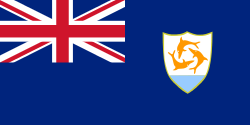 Anguilla - +1 264
Anguilla - +1 264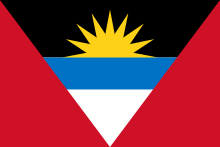 Antigua and Barbuda - +1 268
Antigua and Barbuda - +1 268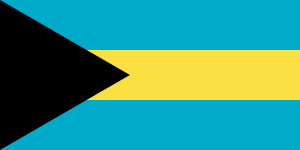 Bahamas - +1 242
Bahamas - +1 242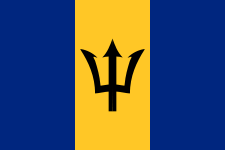 Barbados - +1 246
Barbados - +1 246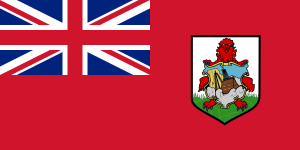 Bermuda - +1 441
Bermuda - +1 441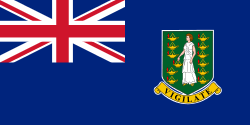 British Virgin Islands - +1 284
British Virgin Islands - +1 284 Canada - +1 514, +1 613, etc.
Canada - +1 514, +1 613, etc.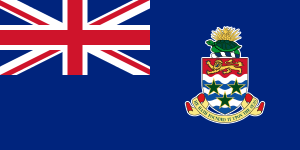 Cayman Islands - +1 345
Cayman Islands - +1 345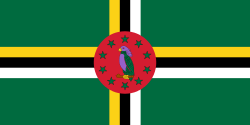 Dominica - +1 767
Dominica - +1 767 Dominican Republic - +1 809, +1 829, +1 849
Dominican Republic - +1 809, +1 829, +1 849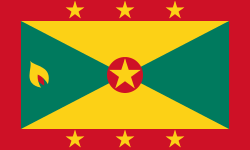 Grenada - +1 473
Grenada - +1 473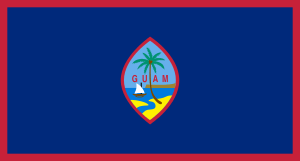 Guam - +1 671
Guam - +1 671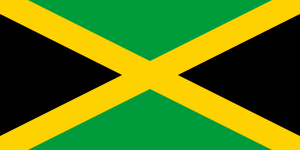 Jamaica - +1 876
Jamaica - +1 876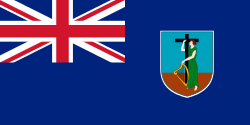 Montserrat - +1 664
Montserrat - +1 664 Northern Mariana Islands - +1 670
Northern Mariana Islands - +1 670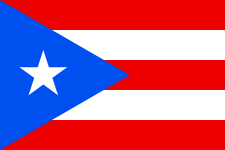 Puerto Rico - +1 787, +1 939
Puerto Rico - +1 787, +1 939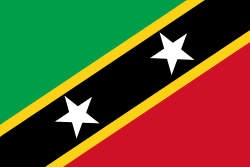 Saint Kitts and Nevis - +1 869
Saint Kitts and Nevis - +1 869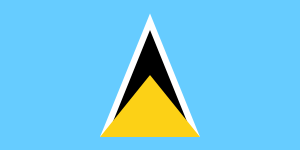 Saint Lucia - +1 758
Saint Lucia - +1 758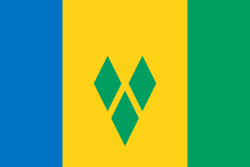 Saint Vincent and the Grenadines - +1 784
Saint Vincent and the Grenadines - +1 784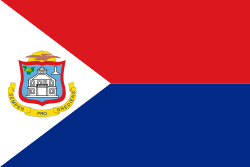 Sint Maarten[8] - +1 721
Sint Maarten[8] - +1 721 Trinidad and Tobago - +1 868
Trinidad and Tobago - +1 868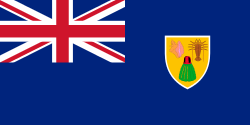 Turks and Caicos Islands - +1 649
Turks and Caicos Islands - +1 649 United States - +1 212, +1 213, +1 312, etc.
United States - +1 212, +1 213, +1 312, etc.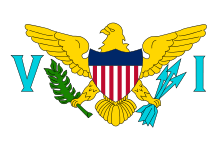 United States Virgin Islands - +1 340
United States Virgin Islands - +1 340
Toll charges
Despite the similar dialing format, calls between different countries and territories that use the NANP are not always charged as domestic calls. Calls between the United States and Canada are domestic, but are typically charged at higher rates than calls to most domestic areas, excluding from flat-rate plans (i.e.: VoIP or fiber-optic services) which do not imply any extra charge for calls between the United States and Canada. Call costs to other destinations in the NANP area (such as the NANP Caribbean countries) are charged at overseas rates even on flat-rate plans in the United States and Canada ; for example, it generally costs more to call Bermuda from the United States than it does to call the UK or Japan, even though the dialing format is the same as the domestic format. Similarly, calls from Bermuda to US numbers, (including toll-free 1-800), incur high international rates. This was because many of the island nations at the time implemented a plan of subsidizing the cost of local phone services by directly charging heavier pricing levies on international Long Distance services.
Because of these higher fees, scams had taken advantage of customers' unfamiliarity with pricing structure to call the legacy regional area code 809. Some scams lured customers from the United States and Canada into placing expensive calls to the Caribbean, by representing area code 809 as a regular domestic, low-cost, or toll-free call. The split of 809 (which formerly covered all of the Caribbean NANP points) into multiple new area codes created many new, unfamiliar prefixes which could be mistaken for US or Canada domestic area codes but carried high tariffs. In various island nations, premium exchanges such as +1-876-HOT-, +1-876-WET- or +1-876-SEX- (where 876 is Jamaica) became a means to circumvent consumer-protection laws governing area code 900 or similar US-domestic premium numbers.
These scams are currently on the decline, with many of the Cable and Wireless service monopolies being opened up to competition, hence bringing rates down. Additionally, many Caribbean territories have implemented local government agencies to regulate telecommunications rates of providers.[21][22]
Dialing procedures
Despite having a closed numbering plan, the NANPA permits implementation of local dial plans in each plan area, depending on requirements. When multiple NPA codes serve a calling area in an overlay arrangement, ten-digit (10D) dialing is required, while seven-digit (7D) dialing may be permissible in areas with single area codes.[23] Furthermore, the requirement of dialing the prefix 1 depends on the requirements of toll alerting. The NANPA publishes dial plan information in its information for individual area codes.[24]
The standard dialing plans in most cases are as follows:
| Local within area code | Local outside area code | Toll within area code | Toll outside area code | |
|---|---|---|---|---|
| Single code area, with toll alerting | 7D | 7D or 10D | 1+10D | 1+10D |
| Single code area, without toll alerting | 7D | 1+10D | 7D or 1+10D | 1+10D |
| Overlaid area, with toll alerting | 10D | 10D | 1+10D | 1+10D |
| Overlaid area, without toll alerting | 10D or 1+10D | 1+10D | 10D or 1+10D | 1+10D |
Most areas allow permissive dial of 10D or 1+10D even for calls that could be dialled as 7D. The number of digits dialed is unrelated to whether a call is local or toll when there is no toll alerting. Allowing 7D local dial across an area code boundary (which is uncommon today) requires NXX code protection on the other side (locally if using toll alerting, across the entire area code otherwise) to avoid assignment of the same seven-digit number on both sides.
Most areas permit local calls as 1+10D except for Texas, Georgia, and some jurisdictions in Canada which require that landline callers know which numbers are local and which are toll, dialling 10D for local calls and 1+10D for all toll calls.
In almost all cases, domestic operator-assisted calls are 0+10D.
Special numbers and codes
Some common special numbers in the North American system:
- 0 - Operator assistance
- 00 - Long-distance operator assistance (formerly 2-1-1)
- 011 - International Access Code. (For all destinations outside the NANP)
- 01 - International Access Code using operator assistance. (For all destinations outside the NANP)
- 101 xxxx - Used to select use of an alternative long-distance carrier
- 211 - Local community information or social services (in some cities)
- 311 - City government or non-emergency police matters
- 411 - Local telephone directory service (Some telephone companies provide national directory assistance)
- 511 - Traffic, road, and tourist information
- 611 - Telephone line repair service (formerly 4104), mobile telephone company customer service (formerly 811).
- 711 - Relay service for customers with hearing or speech disabilities.
- 811 - "Dig safe" pipe/cable location in the United States, non-urgent telehealth/teletriage services in Canada (formerly telephone company business office)
- 911 - Emergency telephone number - fire brigade, ambulance, police.
- 958-xxxx and 1-NPA-959-xxxx - Plant test numbers, such as automatic number announcement circuits. It was once common to reserve entire unused exchange prefixes or N11 numbers (4101 was ringback on many step-by-step switches), but these have largely moved to individual unpublished numbers within the standard 958-xxxx (local) or 959-xxxx (long-distance) plant test exchanges as numbers become scarce.
- 1-NPA-555-1212 - Non-local directory information (Canada and United States)
There are also special codes, such as:
- *51 and 1151 A history of unanswered calls on a telephone number, useful for those who are not Caller ID subscribers.
- *57 and 1157 Used to "trace" harassing, threatening, abusive, obscene, etc. phone calls, and keep results of trace at phone company.
- *66 and 1166 To keep retrying a busy-line (see also Called-party camp-on)
- *67 and 1167 Caller ID Block
- *69 and 1169 Call Return caller may press '1' to return call after hearing number
- *70 and 1170 Cancel call waiting on a call-by-call basis
- *71 and 1171 Three-way calling, which lets a person talk to people in two different locations at the same time.
- *74 and 1174 Speed dial, which allows someone to quickly dial any of eight frequently called numbers using a one-digit code, from any phone on their line. *75 allows a total of 30 speed-call numbers with two digits.
- *82 and 1182 Releases Caller ID block on a call-by-call basis
Note: The four-digit numbers do not work in some areas. The codes prefixed with the "*" symbol are intended for use on Touch-Tone telephones, whereas the four-digit numbers prefixed 11xx are intended for use on rotary dial telephones, where the Touch-Tone * symbol is not available.
Not all NANP countries use the same codes. For example, the emergency telephone number is not always 911: Trinidad and Tobago and Dominica uses 999, as in the United Kingdom. The country of Barbados uses 211 for police force, 311 for fire, and 511 for ambulance, while Jamaica uses 114 for directory assistance, 119 for police force, and 110 for fire and ambulance services.
Despite its early importance as a share of the worldwide telephone system, few of the NANP's codes, such as 911, have been adopted outside the system. Determining that 911 requires unnecessary rotation time on rotary dial telephones, the European Union has adopted its own standardized number of 112, while countries in Asia and the rest of the world use a variety of other two- or three-digit emergency telephone number combinations. The 112 code is gaining prevalence because of its preprogrammed presence in mobile telephones that conform to the European GSM standard. The European Union and many other countries have chosen the International Telecommunication Union's 00 as their international access number instead of 011. The toll-free prefix 800 has been widely adopted elsewhere, including as the international toll-free country code. It is often preceded by a 0 rather than a 1 in many countries where 0 is the trunk prefix.
Alphabetic mnemonic system
Telephone dials and usage in the NANP service areas maintain the tradition of alphabetic dialing. On most US and Canadian telephones, three letters appear on each number button from 2 through 9 (as standardized much later by ISO 9995-8 and, in Europe, E.161). This accommodates 24 letters. Historically, the letters Q and Z were omitted, though on some modern telephones they are added. SMS-capable devices have all 26 letters. The alphabet is apportioned as follows:
2 = ABC 3 = DEF 4 = GHI 5 = JKL 6 = MNO 7 = PRS or PQRS 8 = TUV 9 = WXY or WXYZ
No letters are typically mapped to the 1 or 0 keys, although some corporate voicemail systems use Q and Z as 1, and some old telephones assigned the Z to the digit 0.
Originally, this scheme was used as a mnemonic device for telephone number prefixes. When telephone numbers in the United States were standardized in the mid-20th century to seven digits, the first two digits of the exchange prefix were expressed as letters rather than numbers, using the telephone exchange name. Before World War II, the largest cities used three letters and four or five numbers, while in most cities with customer dialing, phone numbers had only six digits (2L-4N). The prefix was a name, and the first two or three letters, usually shown in capital letters, were dialed. Later, the third letter, where implemented, was replaced by a digit, or an extra digit was added. This generally happened after World War II, although New York City converted already in 1930. The adoption of seven-digit local numbers (2L-5N) was chosen as the requirement for direct distance dialing and progressively deployed starting the late 1940s.
Thus, the famous Glenn Miller tune "PEnnsylvania 6-5000" refers to telephone number PE6-5000, a number still in service at the Hotel Pennsylvania (212 736-5000) in New York. Similarly, the classic film "BUtterfield 8" is set in the East Side of Manhattan between roughly 64th and 86th Streets, where the telephone prefixes include 288. In some works of fiction, phone numbers will begin with "KLondike 5" or "KLamath 5", which translates to 555, an exchange that is reserved for information numbers in North America.
The letter system was phased out, beginning before 1965, although it persisted ten years later in some places. It was included in Bell of Pennsylvania directories until 1983. Even today, some businesses still display a 2L-5N number in advertisements, e.g., the Belvedere Construction Company in Detroit, Michigan not only still uses the 2L-5N format for its number (TYler 8-7100), it uses the format for the toll-free number (1-800-TY8-7100).
Despite the phasing out of the letter system otherwise, alphabetic phonewords remain as a commercial mnemonic gimmick, particularly for toll-free numbers. For example, one can dial 1-800-FLOWERS to send flowers to someone, or 1-800-DENTIST to find a local dentist. Sometimes, longer phonewords are used — for example one might be invited to give money to a public radio station by dialing 1-866-KPBS-GIVE. The "number" is 8 digits long, but only the first seven need be dialed. If an eighth (or more) digit is dialed, the landline switching system will ignore it. Mobile and VoIP users may need to manually drop any numbers past the seventh digit as some mobile switching systems will not automatically ignore them, resulting in a failed call. Also, some users of smartphones can have difficulty dialing phonewords, as some of those devices do not have the apportioned letters on the keys used for dialing. This can be avoided by accompanying the use of phonewords with the actual numeric phone number, allowing users of such smartphones to dial using the numeric phone number. Some smartphones permit dialing phonewords by holding down a special function key, such as ALT in the case of the BlackBerry, while pressing another key on the qwerty pad.
In addition to commercial uses, alphabetic dialing has occasionally influenced the choice of regional area codes in the United States. For example, when area 423 (East Tennessee) was split in 1999, the region surrounding Knoxville was assigned area code 865, chosen to represent the word "VOL"—short for "Volunteers", the nickname of athletic teams at the University of Tennessee.[25][26]
Several of the area codes in the Caribbean have been chosen with alphabetic dialing in mind:
- 242 "BHA" for the Bahamas
- 246 "BIM" for Barbados, also called "Bim" or "Bimshire"
- 264 "ANG" for Anguilla
- 268 "ANT" for Antigua and Barbuda
- 284 "BVI" for the British Virgin Islands
- 473 "GRE" for Grenada
- 758 "SLU" for Saint Lucia
- 767 "ROS" for Roseau, the capital of Dominica
- 784 "SVG" for Saint Vincent and the Grenadines
- 868 "TNT" for Trinidad and Tobago
The state of Nevada has previously attempted to obtain area code 777 (lucky 7's), but was unable to secure it.[27]
Cellular services
A difference between the NANP system and other plans is that, apart from an obscure, rarely used area code 600 in Canada, no separate, non-geographical area codes have been created for cellular phones, as is the case in most European and Asian countries, where mobile services are assigned their own prefixes. This means that most North American mobile phones are assigned the same locality-specific codes as landlines, and calls to them are billed at the same rate. Consequently, the "caller pays" pricing model adopted in other countries, in which calls to cellular phones are charged at a higher nationwide rate but incoming mobile calls are not charged to the mobile user, could not be used. Instead, North American cellular telephone users are also generally charged to receive calls as well ("subscriber pays"). In the past, this discouraged mobile users from using the phones or giving out the number. However, robust price competition among carriers has led to dramatic cuts in the average price per minute for contract customers (for both inbound and outbound calls), which can compare favorably to those in caller-pays countries. Most users select bundle pricing plans that include all the minutes they expect to use in a month. Of the four major national carriers in the United States, all four (AT&T, Sprint, T-Mobile, Verizon) offer free calling between mobile phones on the carrier's network, and Sprint also offers its customers free calling to mobile phones on other networks.
Some industry observers have blamed subscriber pays as one of the main factors in the relatively low mobile phone penetration rate in the United States compared to that of Europe. In this model the convenience of the mobility is charged to the subscriber. Callers from outside the local-calling region of the assigned number, however, pay for a long-distance call, although domestic long distance rates are generally lower than the rates in caller-pays systems. Conversely, an advantage of caller-pays is the relative absence of telemarketing and nuisance calls to mobile numbers. The integrated numbering plan also enables local number portability between fixed and wireless services within a region, allowing users to switch to mobile service while keeping their phone numbers.
The initial plan for overlays did allow for providing separate area codes for use by mobile devices, although these were still assigned to a specific geographical area (rather than the nationwide mobile area codes common to most other countries) and were charged at the same rate as other area codes. Initially, the new area code 917 for New York City was specifically assigned for this purpose within the 5 boroughs; however, a Federal court struck this down and banned the use of an area code for a specific telephony purpose. Since mobile telephony is expanding faster than landline, new area codes typically have a disproportionately large fraction of mobile and nomadic numbers, although landline and other services rapidly follow and local network portability can blur these distinctions.
The experience of Hurricane Katrina and similar events revealed a possible disadvantage of the methods employed in the geographic assignment of cellular numbers. Many mobile phone users could not be reached, even when they were far from the stricken areas, because the routing of calls to their phones depended on equipment in the affected area. They could make calls but not receive them.
The use of geographic numbers may also lead to tromboning; one can take a handset with a Vancouver number into St. John's and outbound calls to St. John's numbers while in that city will be local, but incoming calls must make the cross-country trip to Vancouver and back. This adds costs for subscribers, as an 8000 km cross-country call (as a worst case) incurs long-distance tolls in both directions. AMPS subscribers used to be provided with a local number (such as 1-NPA-NXX-ROAM) in each city, allowing them to be reached by dialling that number plus the ten-digit mobile telephone number; this is no longer supported.
Another related issue for services like mobile telephony is the scarcity of telephone numbers. In contrast to other countries, where mobile and other special-number operators enjoy wide leeway to generate large quantities of telephone numbers, this is not an option in the NANP, with its geographical area codes with a fixed number of digits.
Fictional telephone numbers
In North American television programs and films, 555, and in older movies and shows, KLondike 5 or KLamath 5, is used for the exchange prefix of fictitious telephone numbers, so if anyone is tempted to telephone a number seen on screen, it does not cause a nuisance to any actual person.
Occasionally, however, realistic telephone numbers are used in real-life contexts, often in songs, with varying intents and consequences. A classic example is the 1982 song "867-5309/Jenny" by Tommy Tutone, which is the cause of a large number of calls, although an Indianapolis plumbing company used both the tune and the number for advertising purposes.
Similarly, not all numbers beginning with 555 are fictional. For example, 555-1212 is the standard number for directory assistance. Only 555-0100 through 555-0199 are now reserved for fictional use, with the other numbers having been released for assignment. Where used, these are normally information numbers; Canadian telcos had briefly promoted 555-1313 as a pay-per-use "name that number" reverse lookup in the mid-1990s.[28] Since "1xx" exchanges are not assigned, some movies have started to use fictional telephone numbers starting with "1".
There are various numbers which are deliberately not issued (for instance, numbers like +1-212-718-xxxx, where 212 and 718 are both existing or proposed New York City area codes, are typically avoided to prevent confusion between an area code and a similarly numbered local exchange in the same region). 958-xxxx and 959-xxxx are usually test numbers. A 0 or 1 in the first digit of an area code or seven-digit local number is invalid, as is a 9 as the middle digit of an area code; these are trunk prefixes or reserved for North American Numbering Plan expansion. Lists of exchanges in an individual area code (posted by CNAC in Canada, NANP in the United States) all list various prefixes as deliberately not issued. Unlike the 555 exchange, many of these see little or no use as fictional telephone numbers.
See also
- List of area code overlays
- List of country calling codes
- List of North American Numbering Plan area codes
- List of original NANP area codes
- North American Numbering Plan expansion
- Area codes in the Caribbean
- Vertical service code
References
- ↑ Nunn, W. H. (1952). "Nationwide Numbering Plan". Bell System Technical Journal 31 (5): 851–9. doi:10.1002/j.1538-7305.1952.tb01412.x.
- ↑ 2.0 2.1 Notes on the Network, AT&T (1980)
- ↑ Bell Telephone Laboratories, A History of Engineering and Science in the Bell System - The Early Years (1875-1925), M.D. Fagan (ed.), 1975, p.126
- ↑ "Now You Can Call, If Your Calls Don't Work Some Business Lines Aren't Set Up To Call To New Area Codes", The Virginian-Pilot, November 1, 1995. Accessed June 8, 2007. "When the first area code, 201, was introduced in New Jersey in 1951, phone-numbering experts thought there would be enough codes with a middle digit of 0 or 1 to last well into the next century."
- ↑ 1951: First Direct-Dial Transcontinental Telephone Call, AT&T Corporation. Accessed June 8, 2007. "Nov. 10, 1951: Mayor M. Leslie Downing of Englewood, N.J., picked up a telephone and dialed 10 digits. Eighteen seconds later, he reached Mayor Frank Osborne in Alameda, Calif. The mayors made history as they chatted in the first customer-dialed long-distance call, one that introduced area codes."
- ↑ NANPA : North American Numbering Plan Administration – About Us
- ↑ MEHTA, STEPHANIE N. (1999-02-26). "The Kennedy Space Center Acquires A New Area Code: 3-2-1, as in Blast Off". The Wall Street Journal.
- ↑ 8.0 8.1 8.2 "PL-418: Introduction of NPA 721 (Sint Maarten)" (PDF). North American Numbering Plan Administration. 2011-01-05. Retrieved 2011-08-08. Updated by: "PL-423: Updated Information - Introduction of NPA 721 (Sint Maarten)" (PDF). North American Numbering Plan Administration. 2011-07-27. Retrieved 2011-08-08.
- ↑ Area Code History. Accessed January 4, 2009. "The rationale for this 'low number/high population' scheme was based on the fact that phones had rotary dials in those days. Lower numbers resulted in shorter 'dial pulls' so it was reasoned that the regions with the most people in them should require the least 'work' to call." The digit 0 represented 10 clicks.
- ↑ "First Direct-Dial Transcontinental Telephone Call > 1950s > 1951". AT&T Labs Research. 2012. Retrieved June 12, 2012.
Determined to build a better system, an AT&T Engineering Department team investigated using a single set of short codes to divide North America into unique calling areas. The teams L. K. Palmer and W. H. Nunn concluded that a three-digit code - 2-to-9 as the first digit, the second number always 1 or 0 - produced a set of unique area codes with room for growth. Back then, a local phone number started with an exchange name followed by numbers, such as "Murray Hill 5." Since there were no letters above 1 or 0 on the dial, no phone numbers used a 1 or 0 in the first two pulls of the dial. Thus, equipment could distinguish long distance from local calls. The team assigned area codes with a middle digit of 1 to states needing multiple area codes and area codes with a middle digit of 0 to the rest.
- ↑ NANP NPA rule
- ↑ 11 FCC Rcd 8353
- ↑ 11 FCC Rcd 8355
- ↑ 10 FCC Rcd 12351
- ↑ 47 C.F.R. 1.1204
- ↑ 11 FCC Rcd 8401
- ↑ Dow Jones Business News (28 September 2014). "Phone Database Transfer Draws Lawmakers' Scrutiny". NASDAQ.com.
- ↑ Lichtblau, Eric (28 September 2014). "Spy Agencies Urge Caution on Phone Deal". The New York Times.
- ↑ http://www.nanpa.com/number_resource_info/Summary-of-Rate-Center-Consolidations.pdf
- ↑ April 2014 NANP Exhaust Analysis
- ↑ The Barbados Fair Trading Commission
- ↑ The Eastern Caribbean Telecommunications Authority (ECTEL) > Telecom regulations
- ↑ http://www.nanpa.com/enas/npaDialingPlansReport.do
- ↑ NANPA information on individual area codes
- ↑ See Brewer, Bill. "423 Area Code To Become VOL In 9 ET Counties." Knoxville News-Sentinel. April 17, 1999.
- ↑ Tennessee Regulatory Authority press release, April 29, 1999
- ↑ Associated Press (1998-02-06). "State approves plan for second area code in northern Nevada". Las Vegas SUN (Greenspun Media Group). Retrieved 2007-12-01.
Doug Hescox, area code administrator for Nevada and California, hasn't divulged options for the new code. But he said a "lucky" 777 or a code close to the old 702 - like 701 or 703 - are already reserved or in use elsewhere.
- ↑ "Canadian telco offers users a handy reverse directory.". America's Network. May 15, 1996.
External links
- North American Numbering Plan Administration (NANPA)
- Map of the original 86 area codes from 1947
- Animation of US area codes since 1947
- North American Numbering Council
- NANP Discussion 2003 Document - "Understanding the North American Numbering Plan"
| |||||||||||||||||
| ||||||||||||||||||
| ||||||
.svg.png)